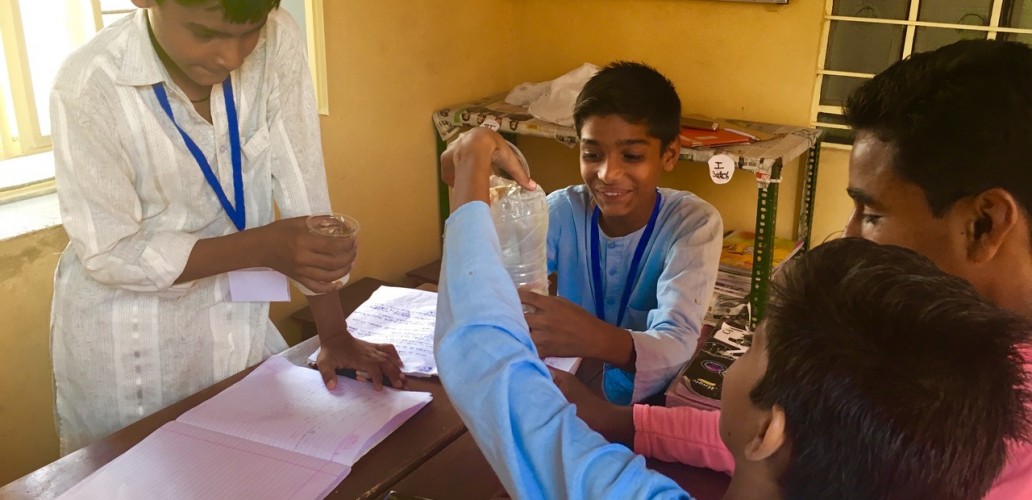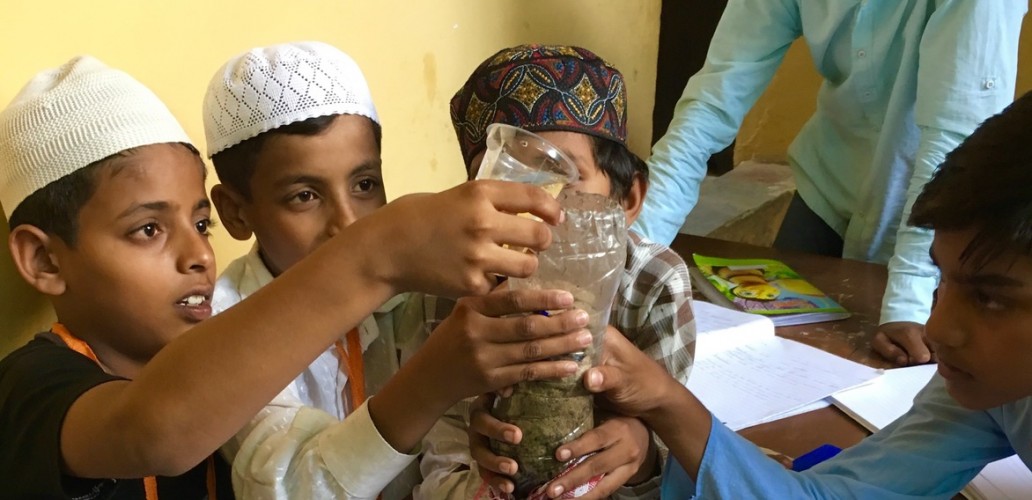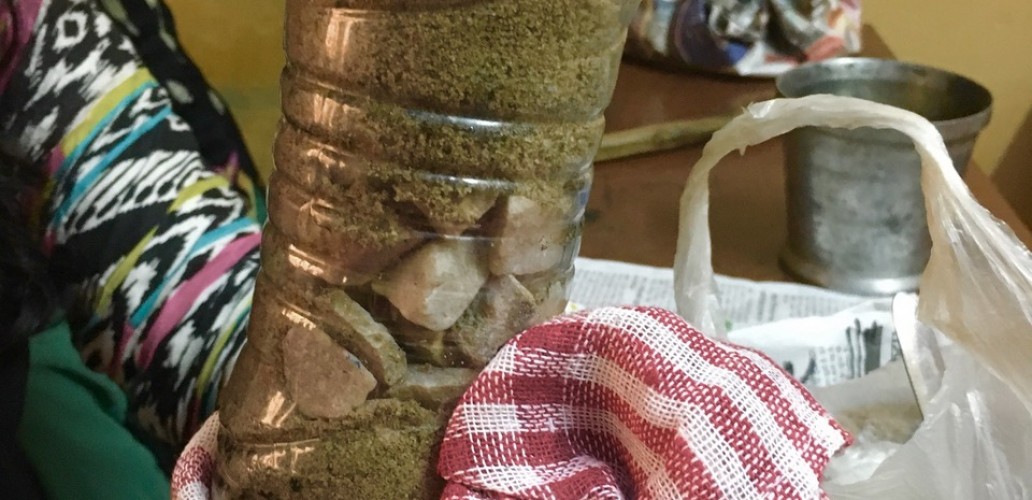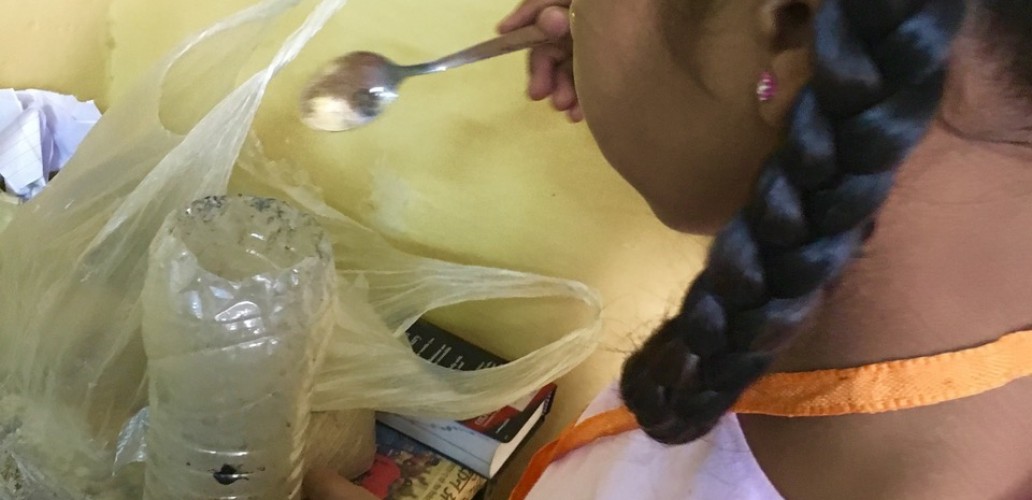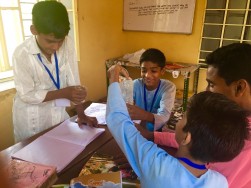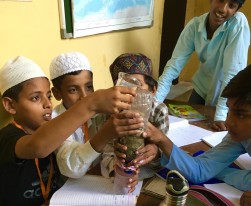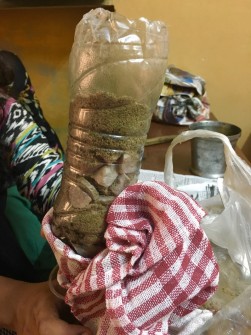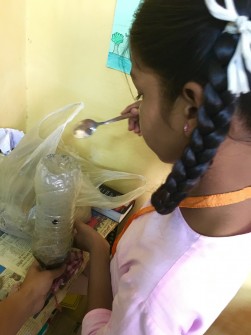Water Filter Lab
By Samantha Chai
Two of the most memorable days that I spent at the Foundation were dedicated to building a homemade water filter in the Rose and Lily classes (which consist of the oldest students.) I had prepared the students for this activity by teaching lessons about water purification and water contamination, which fit into my broader project of water sanitation and conservation. We discussed important terminology, the risks of drinking dirty water, and the materials we would need in order to build a simple charcoal water filter. All of this talking and learning culminated in a lab experience—their first, the students insisted.
A basic water filter requires only a few materials and the procedure for building it is simple. We put charcoal, sand, and rocks inside an upside-down plastic water bottle and used a cloth to hold the materials inside the bottle. As I questioned the students about which step came next in the procedure and interrogated them as to the use of each material, students who answered correctly were able to physically complete the step in front of the class. The room came alive as students shouted out anecdotes from the lesson on water purification and furiously jotted down notes from the whiteboard—all of them wanting to be lucky enough to add a few scoops of charcoal in the filter. I was amazed by the enthusiasm, having forgotten myself the intrigue of helping and participating for a child.
One of the most entertaining aspects of the experiment was the imperfection of our filter. The charcoal we used was regular charcoal collected from one teacher’s home instead of activated charcoal, which is mixed with a calcium chloride solution and baked. Our charcoal made the initial water that came out of the filter black, even though I had described to the students in our water purification lesson that the water would be pure and clear. This gave me the opportunity to instigate critical thinking amongst material that was otherwise review.
I guided the students in writing lab reports to accompany the experiment. We brainstormed certain elements as a group, specifically the purpose, materials, procedure, and results. The students individually crafted their own hypotheses and discussions, the latter of which prodded:
“Why do you think the water was black?”
“Why do you think the water came out slowly?”
“If you did this experiment again, what would you do differently?”
“Was your hypothesis correct?”
The discussion questions in the students’ lab reports provoked some clever responses, as one girl suggested that if we were to do this experiment again, we should boil the water. Another girl suggested that we put the charcoal in the water filter last rather than first so that the water wouldn’t turn black. Perhaps the most insightful response to my question, “Why do you think the water was black?” was “The water was black because it was dirty.”
This water filter lab was not only interactive and exciting, but also a drastic change from the lecture-style lessons in crowded classrooms that define the schools that most of the kids attend. Having grown up in classrooms equipped with so many supplies and small class sizes, I’ve taken for granted my opportunities for hands-on learning and individual attention. This is the kind of exercise in which the students were finally rewarded for their attentiveness and careful notes. Here they benefitted not only from learning material presented to them, but also from using their creativity and deeper understanding to explain how and why their experience differed from what was expected. I hope this type of learning encourages the students to adapt what they learn in the classroom to real-life scenarios as they continue their careers as both students and privileged members of their community.

